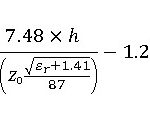The GNB, or GNODEB, is a Critical Component in the Architecture of 5G (FIFTH Generation) Wireless Networks, SERVING AS The Base Station Responsible for Facilitating Communication Between User Equipment (EU) and the Core Network. Its functions are diverse and contributor to the key features that define the capabilitities of 5g networks. Here's an in-depth explanation of the functions of the gnb in 5g:
- Radio Communication:
- Wireless signal transmission and reception:
- The Primary and Fundamental Function of the GNB is to transmit and receive wireless signals to and from User Equipment. IT Employs Advanced Radio Technologies, Including Massive Mimo (Multiple-Input Multiple-Output), Beamforming, and Millimeter-Wave Frequencies, To Enhance Data Rates, Coverage, and Overall Network Performance.
- Frequency Bands and New Radio (NR) Interface:
- The GNB implements The 5G New Radio (NR) Interface, Defining the Specifications for Communication Over the Air in 5g Networks. It operates in Various Frequency Bands, Including Sub-6 GHz and Millimeter-Wave Bands (FR1 and FR2), Offering Flexibility and Increased Capacity.
- Carrier Aggregation:
- The GNB Carrier Aggregation supports, Allowing it to aggregate multiple Frequency Bands to Increase Data Rates and Network Capacity. This feature enhances the overall throughput and efficiency of 5g communication.
- Wireless signal transmission and reception:
- Advanced Technologies:
- Massive Mimo and Beamforming:
- GNB Incorporate Massive Mimo Technology, Utilizing A Large Number of Antennas to Improve Spectral Effectorcy and Enable The Simultaneous Communication With Multiple Ues. Beamforming Focuses Signals in specific Directions, Enhancing Coverage and Capacity.
- Full Duplex Communication:
- In some deployments, GNB May support Full-Duplex Communication, Enabling simultaneous transmission and reception on the same frequency. This enhances the efficiency of spectrum use and improves the overall network performance.
- Flexible spectrum Use:
- The GNB is designed to flexible support spectrum usage, included Both License and UnliceNSED Spectrum. This flexibility allows operators to optimize spectrum resources based on regulations and network requirements.
- Massive Mimo and Beamforming:
- Network Slicing and Differentiation:
- Network Slicing Support:
- Gnb is a key element in Enabiling Network Slicing, A Foundational Concept in 5g that allows the creation of virtualized, isolated networks Tailored for specific use huts or services. Network Slicing Enables Service Providers to Customize The Network to Meet various requirements.
- Differentiation service:
- GNB Facilitates Service Differentiation by Allowing Operators to Prioritize Certain Types of Traffic or Provid Enhanced Services Based on Quality of Service (QOS) Parameters. This capability is crucial for delivering various services, included Enhanced Mobile Broadband (EMBB), Massive Machine Type Communication (MMTC), and ultra-relicable Low-Latency Communication (URLLC).
- Network Slicing Support:
- Mobility and Handover:
- Seamless Mobility:
- Gnb supports Seamless Mobility for Ues Asy Move Across Different Cells or Areas Within The Network. It Handovers Efficiently to Ensure Uninterrupted Communication During Transitions.
- Interworking with Legacy Technologies:
- GNB is designed to interwork with legacy technologies, Allowing for Smooth Transitions and Handovers Between 5G and Previous Generations of Mobile Networks (Such as Lte). This backward compatibility ENSURES A SEAMLESS USER EXPERIENCE DURING THE MIGRATION TO 5G.
- Seamless Mobility:
- Security and Authentication:
- Secure Communication:
- The Gnb Plays a Role in Ensting Secure Communication Between Ues and the Core Network. It implements Encryption and Authentication Méchanisms to Protect User Data and H France
- Subscriber Authentication:
- GNB Participates in Subscribing Authentication Processs, ENSURING THAT ONLY AUTH AUTORIZED USERS AND DEVICES Can Access the 5G Network. This is vital for protecting the network from unauthorized access and potential security threads.
- Secure Communication:
- Interconnection With Core Network:
- Connection to Centralized Unit (CU) and Distributed Unit (DU):
- The GNB Interfaces with the Centralized Unit (CU) and Distributed Unit (du) Within The Radio Access Network (RAN) Architecture. The Functional Split Between Cu and du Allows for a More Flexible and Scalable Network Design.
- Exchange of Control and User Plane Information:
- GNB Facilitates The Exchange of Control and User Plane Information With the Cu and Du, Contributing to the Overall Coordination of Radio Resources and Efficient Network Management.
- Connection to Centralized Unit (CU) and Distributed Unit (DU):
- Dynamic Resource Management:
- Resource Allocation and Management:
- GNB Dynamicalely Allocates and Radio Resources Based on Network Conditions, Traffic Dessies, and Service Requirements. This Dynamic Resource Management Contributes to Optimal Network Performance and Efficient Use Of Available Spectrum.
- Qos enlightenment:
- The GNB Enforces Quality of Service (QOS) Policies, Enfuring that Different Services Receive The Required Level of Performance Based on Priority and User Expectations. This included parameters such as latency, throughput, and conneability.
- Resource Allocation and Management:
In Summary, The GNB in 5g Serves as the Key Interface Between User Equipment and the Core Network, Enabling Advanced Radio Communication, Supporting Various Technologies, and Playing A Pivotal Role in the Realization of 5g's Key Features. Its Functions CLACKASS NOT Only Traditional Radio Communication But also the Support for Advanced Technologies, Network Slicing, Differentiation Service, Mobility Management, Security, and Efficient Resource Management.
